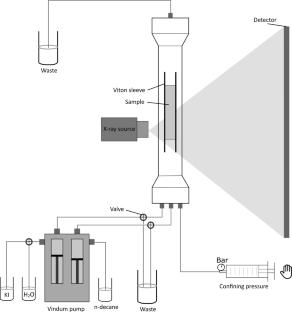Direct Pore-Scale Comparison of Solute Transport in Saturated and Unsaturated Porous Media Using Fast Micro-Computed Tomography
Abstract
Solute transport in unsaturated conditions is important in various applications and natural environments, such as groundwater flow in the vadose zone. Studies of unsaturated solute transport show complex characteristics (e.g. non-Fickian transport) due to larger variations in the pore-scale velocities compared to transport in saturated conditions. However, the physical processes at the pore scale are still not completely understood because direct three-dimensional observations at the pore scale are very limited. In this study, single-phase and two-phase solute transport was directly characterized by performing tracer injection experiments in a sintered glass and Bentheimer sandstone sample. These experiments were imaged by continuous scanning with fast laboratory-based micro-computed tomography. The network-scale flow velocities and transport properties were characterized by using the pore-based transient concentration fields to determine the tracer’s arrival time and filling duration in every pore. Important measures for dispersion (the scalar dissipation rate and filling duration) were determined and indicated a wide range in pore-scale velocities and the existence of stagnant and flowing pores for the unsaturated experiments. Furthermore, we performed the first quantification of the mass transfer coefficient between stagnant and flowing pores on three-dimensional experimental data. We also calculated the tortuosity directly from the interstitial velocity and the pore-based velocity. This was found to be 13% higher in unsaturated conditions compared to saturated conditions. Our results indicate that pore-scale structural heterogeneity increases the differences between saturated and unsaturated solute transport. This study thus provides further insight into pore-scale spreading and mixing of dissolved substances in unsaturated porous media.



 求助内容:
求助内容: 应助结果提醒方式:
应助结果提醒方式:


